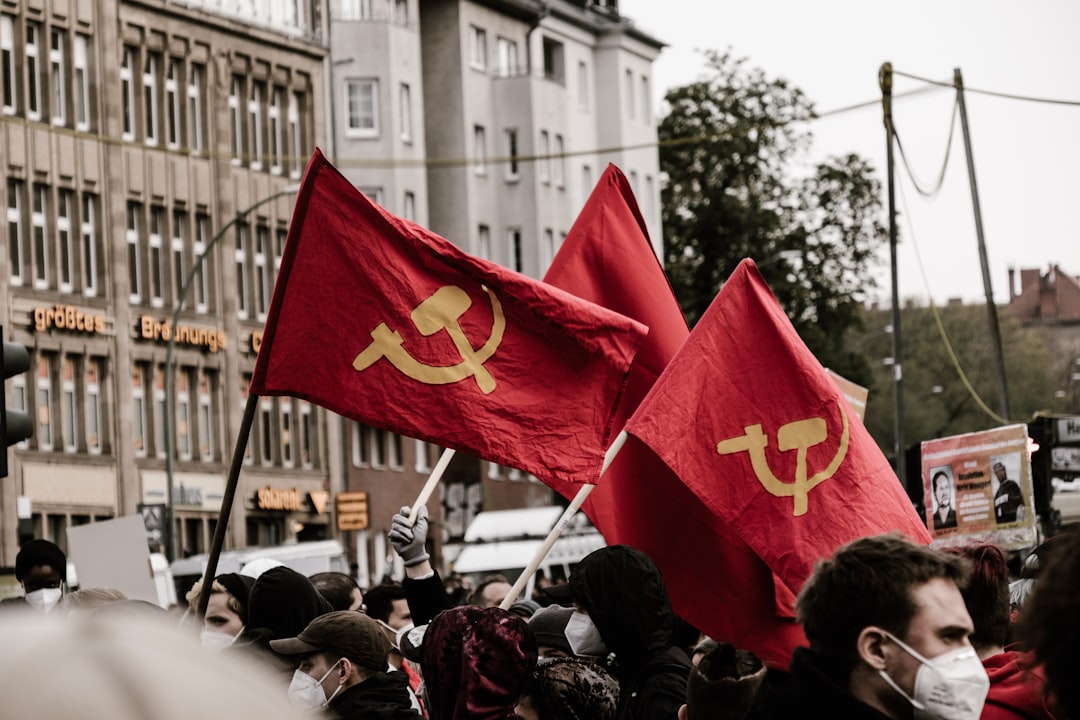Communism vs. Fascism
What's the Difference?
Communism and Fascism are two distinct political ideologies that emerged in the 20th century, each with its own set of principles and goals. While both systems are authoritarian in nature, they differ significantly in their economic and social structures. Communism advocates for the abolition of private property and the establishment of a classless society, where the means of production are owned and controlled by the state. On the other hand, Fascism promotes a totalitarian regime led by a single dictator, emphasizing extreme nationalism, militarism, and the suppression of individual freedoms. Despite their differences, both ideologies have been associated with oppressive regimes and human rights abuses throughout history.
Comparison

| Attribute | Communism | Fascism |
|---|---|---|
| Economic System | Collective ownership of means of production | Private ownership with strong state control |
| Political Ideology | Classless society, equality, and internationalism | Authoritarian, nationalist, and anti-democratic |
| Leadership | Dictatorship of the proletariat | Single-party rule with a supreme leader |
| Individual Rights | Subordinated to the collective and state | Subordinated to the state and party |
| Role of Religion | Generally atheistic or secular | May incorporate religion but subordinate to state |
| Class Structure | Classless society, abolishing social classes | Hierarchical society with a ruling elite |
| Nationalism | Internationalist, aiming for global revolution | Strong emphasis on national identity |
| Role of the State | Strong central planning and state control | Authoritarian state with strong central control |
| Propaganda | Used to promote class consciousness and revolution | Used to promote national unity and loyalty |
| Political Parties | Single ruling party, often communist | Single ruling party, often fascist |

Further Detail
Introduction
Communism and Fascism are two distinct political ideologies that emerged in the 20th century, each with its own set of attributes and principles. While both systems are authoritarian in nature, they differ significantly in their economic structures, social policies, and views on individual rights. This article aims to explore and compare the key attributes of Communism and Fascism, shedding light on their similarities and differences.
1. Economic Structure
Communism advocates for a classless society where the means of production are owned and controlled by the community as a whole. In a communist system, private property is abolished, and resources are distributed based on the principle of "from each according to their ability, to each according to their needs." This means that the state plays a central role in planning and directing economic activities.
On the other hand, Fascism supports a mixed economy where private property exists, but the state exercises significant control over economic activities. While private businesses are allowed to operate, they are heavily regulated and directed by the government to serve the interests of the nation. Fascist economies often prioritize the needs of the state and national goals over individual economic freedom.
2. Social Policies
Communism aims to create a society where social classes are eradicated, and everyone is considered equal. It promotes the idea of collective ownership and collective decision-making, with the ultimate goal of achieving a classless society. In a communist system, social policies often focus on providing universal access to education, healthcare, and other basic necessities, aiming to ensure equal opportunities for all members of society.
Conversely, Fascism emphasizes the importance of a hierarchical society, where individuals are divided into distinct social classes based on their perceived value to the nation. Fascist regimes often promote nationalism, militarism, and the idea of a strong leader who embodies the will of the nation. Social policies in Fascism tend to prioritize the interests of the ruling elite and the dominant ethnic or national group, often leading to discrimination against minority groups.
3. Views on Individual Rights
Communism places a strong emphasis on collective rights and the well-being of the community over individual rights. While it aims to eliminate social inequalities, individual freedoms such as freedom of speech, press, and assembly are often limited or suppressed in communist regimes. The state exercises significant control over the lives of individuals to ensure conformity to the collective goals and ideology.
In contrast, Fascism tends to prioritize the interests of the state and the ruling elite over individual rights. While some individual freedoms may exist, they are often subject to the state's control and can be curtailed in the name of national security or the preservation of the regime. Fascist regimes tend to suppress dissent and opposition, promoting a strong sense of obedience and loyalty to the state.
4. Role of the State
In Communism, the state plays a central role in planning and directing economic activities, as well as ensuring social equality. It exercises control over various aspects of society, including the economy, education, and media. The state is seen as the primary vehicle for achieving the communist ideal of a classless society.
Similarly, Fascism advocates for a strong and centralized state that exercises significant control over all aspects of society. The state is viewed as the embodiment of the nation's will and acts as the ultimate authority. Fascist regimes often employ propaganda and censorship to shape public opinion and maintain control over the population.
Conclusion
While both Communism and Fascism are authoritarian ideologies, they differ in their economic structures, social policies, and views on individual rights. Communism aims for a classless society with collective ownership and decision-making, while Fascism supports a hierarchical society with private property but significant state control. Communism focuses on social equality and collective well-being, while Fascism prioritizes the interests of the state and ruling elite. Understanding these differences is crucial in analyzing the impact and consequences of these ideologies throughout history.
Comparisons may contain inaccurate information about people, places, or facts. Please report any issues.